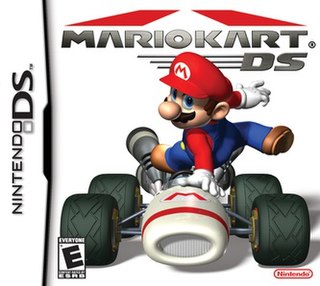
Mario Kart DS is a 2005 kart racing game developed and published by Nintendo for the Nintendo DS handheld game console. It was released in November 2005 in North America, Europe, and Australia, and on December 8, 2005, in Japan. The game was re-released for the Wii U's Virtual Console in North America and PAL regions in April 2015 and in Japan in May 2016. The game is the fifth main entry in the Mario Kart series, and the first to be playable via the Nintendo Wi-Fi Connection online service. Like other games in the series, Mario Kart DS features characters from the Mario series and pits them against each other as they race in karts on tracks based on locations in the Mario series.

Ridge Racer 64 is a 2000 racing video game developed by Nintendo Software Technology and published by Nintendo for the Nintendo 64. It is the first title of Namco's Ridge Racer series to not be on arcades or a PlayStation console, with Namco licensing the series to Nintendo to develop the game. In 2004, the game was ported and remade for the Nintendo DS as Ridge Racer DS, which uses the system's features such as the touch-screen and wireless multi-player. Additionally, Gina Cavalli from R: Racing Evolution replaced Reiko Nagase as the mascot in the DS version. The DS version also was not released in Japan.

Meteos is a 2005 tile-matching video game developed by Q Entertainment and published by Bandai for the Nintendo DS. It was produced by Q Entertainment founder Tetsuya Mizuguchi and designed by Masahiro Sakurai. Meteos was inspired by the video game Missile Command (1980), the film The Matrix (1999) and the television series 24 (2001-2010).
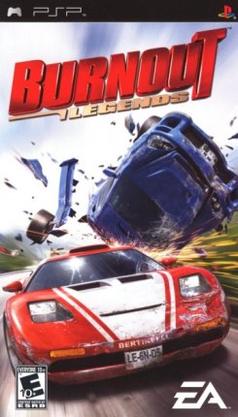
Burnout Legends is a racing video game developed by Criterion Games and published by Electronic Arts for PlayStation Portable. The game features many of the tracks and gameplay modes from the first three Burnout titles but repackaged for the handheld format. Many of the gameplay modes are similar to Burnout 3: Takedown using a mixture of old and new tracks. The Nintendo DS port was developed by Visual Impact.

Nicktoons Unite! is a 2005 action-adventure video game featuring characters and levels from SpongeBob SquarePants, Danny Phantom, The Adventures of Jimmy Neutron, Boy Genius, and The Fairly OddParents. The game was developed by Blue Tongue Entertainment and Climax Action and published by THQ. An Xbox version was also announced but was never released.

FIFA Street 2 is the 2006 sequel to the EA Sports video game FIFA Street. A new "trick stick beat" system was introduced and new authentic tricks were also introduced. The game was released for the GameCube, PlayStation 2, Xbox, PlayStation Portable, Nintendo DS, and mobile phones. The player on the game cover is Portugal international Cristiano Ronaldo.

Tetris DS is a puzzle video game developed and published by Nintendo. It was released for the Nintendo DS on March 20, 2006, in North America, April 13, 2006, in Australia, April 21, 2006, in Europe, and April 27, 2006, in Japan. An installment of the Tetris franchise, the game supports up to ten players locally, and supported online multiplayer of up to four players using Nintendo Wi-Fi Connection prior to its discontinuation.

Cars is a 2006 adventure racing game published by THQ. The game is based on the 2006 film of the same name. It was released for the PlayStation 2, GameCube, Xbox, Microsoft Windows, Game Boy Advance, Nintendo DS, and PlayStation Portable in June 2006, with versions for the Xbox 360 and Wii released later that year. The Wii version includes functionality geared towards its Wii Remote controller and was a launch game for the system. Taking place after the events of the film, the game follows Lightning McQueen as he participates in the new racing season with his goal set on finally winning the Piston Cup. While doing so, he races and trains with the local community of Radiator Springs.
Micro Machines is a series of video games featuring toy cars, developed by Codemasters and published on multiple platforms. The series is based on the Micro Machines toy line of miniature vehicles.
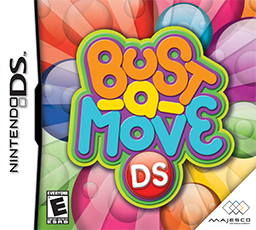
Bust-a-Move DS, known as Pullback!! Puzzle Bobble in Japan, is a puzzle video game developed by Happy Happening and published by Majesco Entertainment for the Nintendo DS handheld video game console.
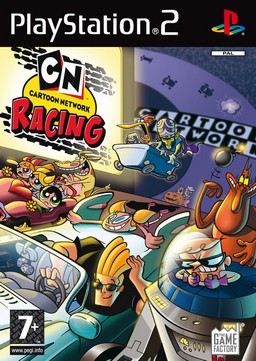
Cartoon Network Racing is a racing video game developed by Eutechnyx for PlayStation 2 and Firebrand Games for Nintendo DS, published by Danish video game developer The Game Factory, and released on December 4, 2006, in North America, and on February 9, 2007, in Europe. The gameplay is similar to Nintendo's 2003 game Mario Kart: Double Dash, but the characters and racetracks are all from six of Cartoon Network's original animated television series: Courage the Cowardly Dog, Cow and Chicken, Dexter's Laboratory, I Am Weasel, Johnny Bravo, and The Powerpuff Girls.
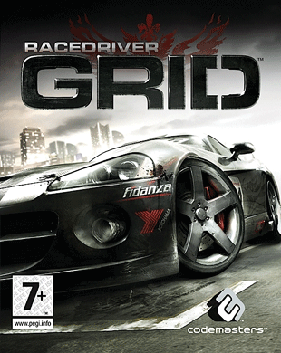
Race Driver: Grid known outside of Europe as Grid is a 2008 racing video game developed and published by Codemasters for Microsoft Windows, PlayStation 3, Xbox 360, Nintendo DS, arcade, Java ME and OS X. It is the first game in the Grid series.

Nicktoons: Attack of the Toybots is an action-adventure video game published by THQ for the Wii, Nintendo DS, Game Boy Advance, and PlayStation 2. The game was first released in North America on October 23, 2007. then in Europe on November 9, 2007. The game was developed by Blue Tongue Entertainment for the Wii and PlayStation 2 versions, Natsume Co., Ltd. for the Nintendo DS version and Firemint for the Game Boy Advance version.

Speed Racer: The Videogame is a racing video game developed by Sidhe Interactive for the PlayStation 2 and Wii consoles, by Virtuos for the Nintendo DS and by Glu Mobile for mobile phones; and published by Warner Bros. Interactive Entertainment and Glu Mobile. It is a tie-in to the 2008 film Speed Racer, set one year after its events. The actors from the movie reprise their role in the video game counterpart. The mobile version was released in April 2008, and the Nintendo versions were released on May 6, 2008, with the PlayStation 2 version being released on September 16, 2008, alongside the DVD and Blu-ray release. Due to the short development time allotted, Warner Bros. chose not to release the game on other contemporary non-Nintendo platforms.

Pokémon Platinum Version is a 2008 role-playing video game developed by Game Freak and published by The Pokémon Company and Nintendo for the Nintendo DS. It is the third version after Pokémon Diamond and Pearl and is part of the fourth generation of the Pokémon video game series. It was released in Japan on September 13, 2008, and later in North America, Australia, and Europe in 2009.

Juka and the Monophonic Menace is an action-adventure video game published and developed by Orbital Media, Inc. in PAL regions, and published by SouthPeak Interactive in NA. It was slated for release on the Nintendo DS, but it was ultimately canceled.

Colin McRae: Dirt 2 known outside Europe as Dirt 2 is a racing video game developed and published by Codemasters in 2009, first for the Nintendo DS, PlayStation 3, PlayStation Portable, Wii and Xbox 360, and then later for PC platforms. It is the sequel to Colin McRae: Dirt. Dirt 2 is the first game in the series since McRae's death in 2007 and the last to feature his name in the title. It is also the first and only game in the series to be available on a Nintendo home console and the last game in the series to be released on handhelds.

Ridge Racer 3D is a 2011 racing video game developed and published by Namco Bandai Games for the Nintendo 3DS. It is the first Ridge Racer series title on a Nintendo platform since Ridge Racer DS (2004) and as usual for the series revolves around cars racing around high speed tracks while drifting. The game received positive reviews and was a commercial success.

Cars 2 is a 2011 racing game based on the 2011 film of the same name. Originally announced at E3 2011, the game was released by Disney Interactive Studios on all major platforms in North America on June 21, 2011, and in Australia two days later. The game was released in Europe on July 22, 2011. Versions for the Nintendo 3DS and PlayStation Portable were released later that year in November. The game features an array of Cars characters competing in spy adventures, as well as racing. The game received mixed reviews from critics.


















